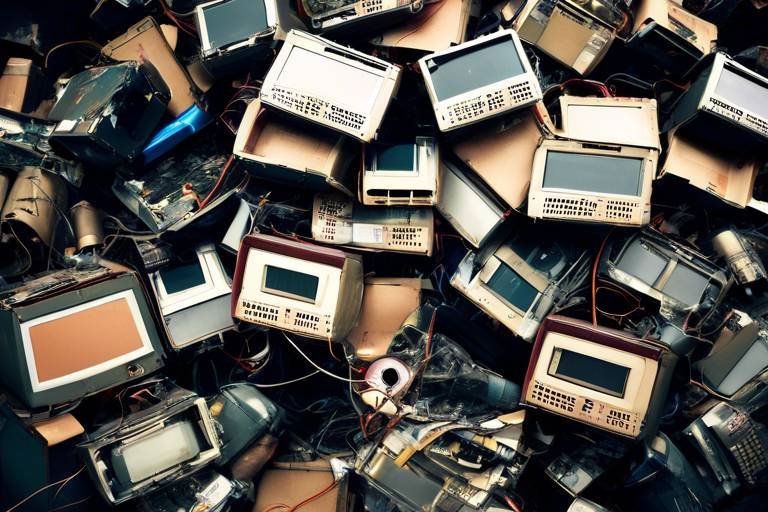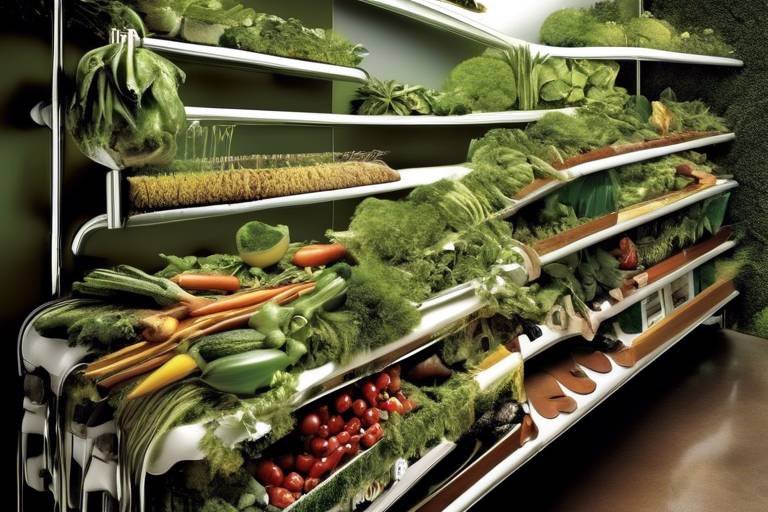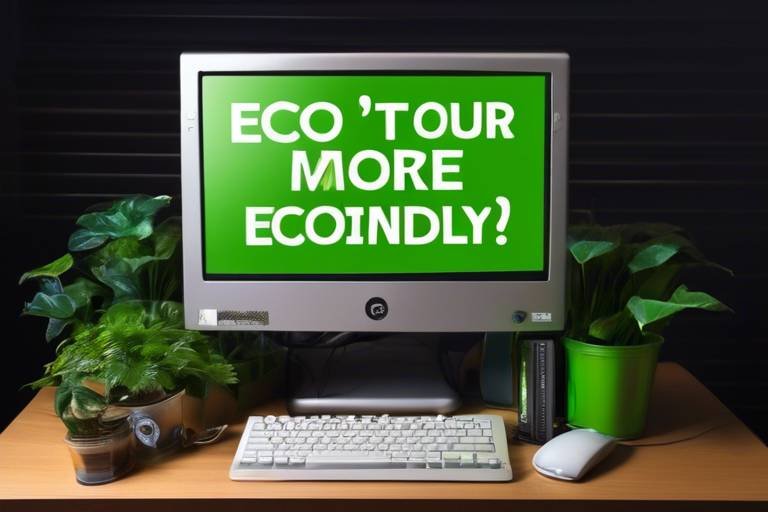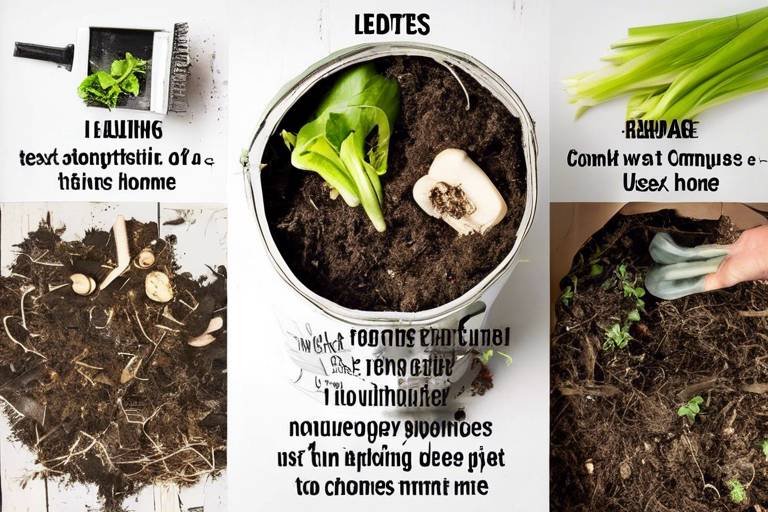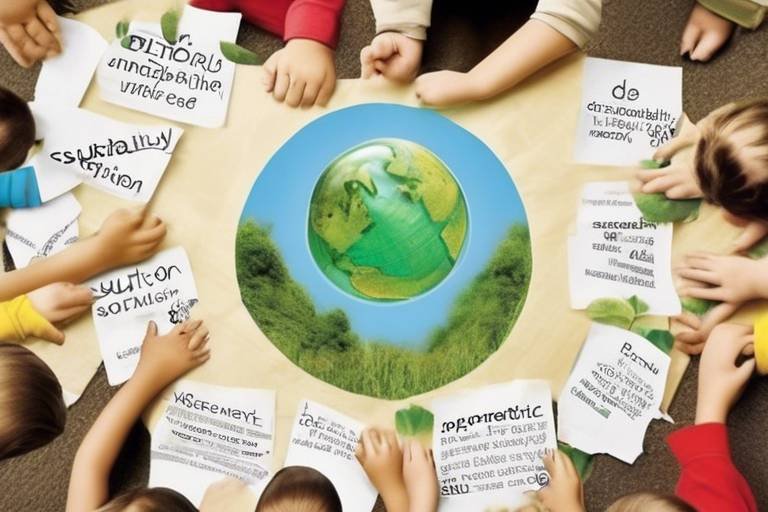How to Minimize Your Paper Usage in Daily Life?
In a world where sustainability is becoming increasingly crucial, the question of how to minimize paper usage in our daily lives is more relevant than ever. Imagine walking into a room filled with stacks of paper, each representing a tree that has been cut down, water that has been wasted, and energy that has been consumed. It's a stark reality that many of us overlook as we go about our busy lives. But what if I told you that reducing your paper consumption could be as simple as changing a few habits? In this article, we'll explore practical strategies that not only help you cut down on paper waste but also promote a more efficient and eco-friendly lifestyle.
Before we dive into the solutions, it's important to understand the magnitude of the problem. Did you know that the production of paper contributes to deforestation, water pollution, and greenhouse gas emissions? Each year, millions of trees are felled to meet the global demand for paper products. This not only impacts wildlife habitats but also contributes to climate change. By minimizing our paper usage, we can significantly lessen our environmental footprint. Think of it as a ripple effect: small changes in our daily habits can lead to monumental shifts in sustainability.
One of the most effective ways to reduce paper usage is to embrace digital alternatives. With the advancement of technology, there are countless tools available that can replace traditional paper methods. For instance, note-taking apps like Evernote or OneNote allow you to jot down thoughts without a single sheet of paper. Additionally, cloud storage solutions such as Google Drive and Dropbox enable you to store documents digitally, making it easy to access and share files without printing. Imagine carrying an entire library in your pocket! The convenience of digital tools not only reduces paper consumption but also enhances productivity.
Sometimes, printing is unavoidable, but that doesn’t mean we can’t be smart about it. Implementing responsible printing practices can significantly minimize waste. For example, always opt for double-sided printing whenever possible. This simple adjustment can cut your paper usage in half! Additionally, use the print preview option to ensure that you only print what you need. This way, you can avoid unnecessary pages and save both paper and ink. It's like being a chef who measures ingredients precisely—every bit counts!
Recycling and reusing paper products is another crucial aspect of minimizing waste. When you finish with a piece of paper, don't just toss it in the trash. Instead, set up a recycling station at home or work. You can even repurpose old paper items creatively! For example, use scrap paper for notes or as packing material. Think of it as giving your old paper a second life. By recycling, we not only reduce the demand for new paper but also conserve the resources used in production.
Creating a paperless office environment is not just a trend; it’s a necessity for modern businesses. Encourage your workplace to adopt digital workflows by utilizing project management tools like Trello or Asana. These platforms allow teams to collaborate without the need for printed documents. Additionally, consider implementing a policy that discourages unnecessary printing. By fostering a culture of digital communication, businesses can save money on paper-related expenses and contribute to a greener planet.
Mindful consumption plays a significant role in reducing paper usage. When shopping, evaluate your purchasing decisions carefully. Opt for products with minimal packaging and paper. For instance, choose digital subscriptions over printed magazines or newspapers. This shift not only saves trees but also declutters your space. It’s like spring cleaning for your conscience—every small choice contributes to a cleaner, greener world.
Awareness is key to driving change. Share your knowledge about paper waste reduction with friends, family, and colleagues. Host workshops or discussions to encourage collective efforts in minimizing paper usage. When people understand the impact of their actions, they are more likely to make conscious choices. Think of it as planting seeds of sustainability that can grow into a forest of change.
Setting specific, measurable goals related to your paper usage can help you track your progress and stay motivated. For example, aim to reduce your paper consumption by 50% over the next year. Keep a journal of your efforts and celebrate small victories along the way. It’s like training for a marathon—every step counts, and the finish line is within reach!
For those looking to deepen their understanding of sustainability and paper waste reduction, numerous resources are available. Books like "The Zero Waste Home" by Bea Johnson and websites such as Earth911 offer valuable insights and tips. Organizations focused on environmental conservation also provide ongoing support and information to help you on your journey.
- What are some easy ways to start reducing paper usage? Begin by switching to digital tools for note-taking and document storage. Also, try to print only when absolutely necessary.
- Is recycling paper enough to combat paper waste? While recycling is important, reducing consumption is even more critical. Aim to minimize paper use first, then recycle what you can.
- How can I encourage my workplace to go paperless? Present the benefits of a paperless office, such as cost savings and environmental impact, and suggest digital tools that can facilitate this transition.

Understanding Paper Waste
When we think about waste, paper often doesn't come to mind as the villain it truly is. In our fast-paced world, we tend to overlook the sheer volume of paper we consume daily. From receipts to newspapers, and from school assignments to office documents, paper is everywhere! Did you know that, according to the Environmental Protection Agency (EPA), paper and paperboard products account for over 25% of the total municipal solid waste in the United States? That's a staggering amount! Understanding the impact of paper waste is crucial if we want to foster a sustainable future.
The process of making paper is not only resource-intensive but also detrimental to our environment. It involves cutting down trees, which are vital for absorbing carbon dioxide and producing oxygen. Furthermore, the production process consumes vast amounts of water and energy, contributing to pollution and climate change. Each ton of paper produced can result in the emission of approximately 2,600 pounds of carbon dioxide, which is equivalent to the annual emissions of a car driven for over 3,000 miles. This is why minimizing paper usage is not just a personal choice; it's a collective responsibility.
So, why should we care about paper waste? Here are a few compelling reasons:
- Environmental Conservation: Reducing paper consumption helps save trees and preserves biodiversity.
- Resource Efficiency: Less paper means less water and energy used in production, leading to lower pollution levels.
- Cost Savings: By minimizing paper usage, both individuals and businesses can cut down on costs related to printing, storage, and disposal.
Moreover, the impact of paper waste extends beyond just the environment. It also affects our economy and quality of life. Think about it: every time we choose to print something, we are not just using paper; we are also incurring costs related to ink, maintenance of printers, and the physical space needed to store documents. By shifting our mindset towards digital solutions, we can streamline our processes and make our lives easier.
In conclusion, understanding paper waste is the first step towards making informed decisions that benefit both our planet and ourselves. The more we educate ourselves about the implications of our paper usage, the better equipped we will be to take action. The journey towards a paperless lifestyle may seem daunting, but every small change can lead to significant improvements in our environmental footprint.

Digital Alternatives
In today's fast-paced world, the reliance on paper is becoming increasingly outdated, thanks to the myriad of available at our fingertips. Imagine a life where you can access all your notes, documents, and important information without the clutter of paper. Sounds appealing, right? With the right tools, you can not only minimize paper usage but also enhance your productivity and organization.
Let's dive into some of the most effective digital solutions that can replace traditional paper methods. For instance, note-taking apps like Evernote or Microsoft OneNote allow you to jot down thoughts, ideas, and reminders in a digital format. These apps not only save space but also come with features like tagging, searching, and syncing across devices, making your life infinitely easier. Think about it: instead of flipping through countless pages of notes, you can simply type a keyword and find exactly what you need in seconds!
Moreover, when it comes to document storage, platforms such as Google Drive or Dropbox offer secure and convenient ways to store your files in the cloud. This means no more losing important documents to spills or accidental shredding! You can access your files from anywhere, share them with colleagues or friends, and even collaborate in real-time. It's like having a virtual office that fits right in your pocket!
Additionally, consider utilizing digital calendars and task management tools like Trello or Asana. These platforms help you keep track of your appointments, deadlines, and to-do lists without the need for sticky notes or printed planners. Imagine your desk free from paper chaos, allowing you to focus on what really matters—getting things done!
For those who love reading, eBooks and audiobooks are fantastic alternatives to physical books. Not only do they reduce the demand for paper, but they also offer portability and accessibility. With a single device, you can carry an entire library with you, making it easier to read on the go. Plus, platforms like Kindle or Audible often provide features like adjustable font sizes and background colors, catering to your personal reading preferences.
To sum it up, embracing digital alternatives is not just about reducing paper waste; it's about enhancing your overall efficiency and organization. With a variety of tools available, you can seamlessly transition to a paperless lifestyle that benefits both you and the environment. So, are you ready to make the switch?
Q: What are some popular note-taking apps I can use?
A: Some popular note-taking apps include Evernote, Microsoft OneNote, and Notion. Each of these offers unique features that can help you organize your thoughts effectively.
Q: How can I ensure my digital files are secure?
A: Using reputable cloud storage services like Google Drive or Dropbox provides built-in security measures. Additionally, consider enabling two-factor authentication for extra protection.
Q: Are eBooks better than physical books?
A: eBooks have the advantage of portability and accessibility, allowing you to carry multiple titles in one device. However, it ultimately depends on personal preference!
Q: Can I collaborate with others using digital tools?
A: Absolutely! Tools like Google Docs and Trello allow for real-time collaboration, making it easy to work with others regardless of location.

Smart Printing Practices
In our fast-paced digital world, it might seem counterintuitive to still rely on printing. However, there are times when a physical copy is necessary, whether it's for important documents, reports, or even just a recipe from your favorite blog. The key is to adopt that not only fulfill your printing needs but also help minimize paper waste. Let's dive into some effective strategies that can make a real difference!
First off, one of the simplest yet most impactful practices is to always utilize the double-sided printing option. By printing on both sides of a sheet, you can effectively cut your paper usage in half. Imagine the amount of paper saved if everyone made this small adjustment! Additionally, many printers come with this feature pre-installed, making it easy to adopt without any extra effort.
Another useful tip is to leverage the print preview option before hitting that print button. This feature allows you to see how your document will look on paper, helping you catch any unnecessary pages or formatting errors. You might be surprised to find that some documents can be condensed or even eliminated entirely. It's like having a virtual editor at your fingertips, ensuring that you're only printing what you truly need.
Moreover, consider using digital alternatives whenever possible. For instance, if you're printing out a recipe, try accessing it on your phone or tablet instead. Not only does this save paper, but it also allows for easy adjustments and updates without the risk of smudging ink or losing pages. Think of your device as a digital cookbook that doesn't require any trees to be sacrificed!
In cases where printing is unavoidable, consider using recycled paper. This not only helps reduce the demand for new paper production but also supports sustainable practices. Many businesses and home offices are now opting for recycled paper, and it’s a great way to show your commitment to the environment. Plus, recycled paper often comes in various textures and colors, giving your documents a unique flair.
Lastly, it's crucial to assess the necessity of each print job. Ask yourself: "Do I really need this on paper?" Sometimes, simply saving a document to your computer or sharing it via email can be just as effective. By being more mindful of your printing habits, you can significantly cut down on paper waste and contribute to a greener planet.
In summary, adopting smart printing practices is all about being intentional with your choices. From double-sided printing to utilizing digital alternatives, every small change can lead to a significant reduction in paper usage. It’s not just about saving trees; it’s about creating a sustainable future for ourselves and generations to come.
Q: How can I remember to print double-sided?
A: Set your printer's default settings to double-sided printing. This way, you won't have to remember each time you print.
Q: What if my printer doesn't support double-sided printing?
A: You can manually print on both sides by printing all odd pages first, then reinserting the printed pages to print the even pages.
Q: Are there any specific types of recycled paper I should look for?
A: Look for paper labeled as "100% recycled" or "post-consumer recycled" to ensure you're making an eco-friendly choice.
Q: What are some good digital alternatives to printing?
A: Consider using note-taking apps like Evernote or Google Keep, cloud storage services like Google Drive, or PDF readers to keep documents organized digitally.

Recycling and Reusing Paper
Recycling and reusing paper is not just a responsible choice; it’s a vital step towards creating a sustainable future. Every year, millions of tons of paper are discarded, contributing to landfill overflow and deforestation. By embracing practices that promote recycling and reusing, we can significantly reduce our ecological footprint. Imagine a world where fewer trees are cut down, where waste is minimized, and where resources are utilized more efficiently. Sounds appealing, right? Well, it’s entirely within our reach!
First and foremost, let’s talk about recycling. Many people may not realize that paper can be recycled multiple times, which means that each sheet of paper you recycle can lead to the production of new paper products without the need for additional raw materials. In fact, recycling just one ton of paper can save approximately 17 trees, 7,000 gallons of water, and 4,100 kilowatts of electricity. Isn’t that incredible? So, how can you contribute to this positive change? Here are a few practical steps:
- Separate Your Waste: Set up a designated recycling bin at home or in the office to collect paper waste. Make it easy for everyone to participate!
- Know What Can Be Recycled: Not all paper products are recyclable. For example, coated paper, like glossy magazines, may not be accepted by all recycling facilities. Familiarize yourself with your local recycling guidelines.
- Support Recycling Programs: Participate in community recycling events or support businesses that prioritize sustainable practices.
Now, let’s dive into reusing paper. This approach is often overlooked but can be just as impactful as recycling. Before tossing out that old paper, consider its potential for a second life. You can use scrap paper for:
- Note-taking: Jot down reminders, grocery lists, or brainstorm ideas on the back of used paper.
- Art Projects: Get creative! Old paper can be transformed into beautiful art, origami, or even homemade greeting cards.
- Gift Wrapping: Use newspaper or old maps to wrap gifts for a unique and eco-friendly touch.
By incorporating these practices into your daily life, you’re not just reducing waste; you’re also fostering a culture of sustainability. Encourage your friends and family to join you in this endeavor. After all, the more people who participate, the greater the impact we can make together. Remember, every small action counts!
In conclusion, recycling and reusing paper are essential components of a sustainable lifestyle. By making conscious choices, we can all contribute to a healthier planet. So, the next time you reach for that piece of paper, take a moment to think about its journey. Will it end up in a landfill, or will you give it a chance to be reused or recycled? The power is in your hands!
Q: How can I find out if my local recycling program accepts certain types of paper?
A: You can check your city or county’s waste management website for specific guidelines on what types of paper are accepted in your recycling program.
Q: Can I recycle paper that has been shredded?
A: It depends on your local recycling program. Some facilities can handle shredded paper, while others may not. Always check with your local guidelines.
Q: What are some creative ways to reuse paper at home?
A: Some fun ideas include using old paper for crafts, making homemade cards, or even using it as packing material for shipping items.

Encouraging a Paperless Office
In today's fast-paced world, the idea of a paperless office isn't just a trend—it's becoming a necessity. Imagine walking into a workspace where the clutter of paper is replaced by sleek digital devices, where files are easily accessible with a click, and where collaboration happens effortlessly through shared online platforms. This vision can be your reality! Encouraging a paperless office not only enhances efficiency but also significantly reduces environmental impact. So, how can you transform your office into a paperless haven?
First off, it's essential to cultivate a culture that embraces digital solutions. Start by introducing cloud storage systems like Google Drive or Dropbox. These platforms allow employees to store and share documents without ever needing to print them. Plus, they offer robust collaboration tools, enabling teams to work together in real-time, regardless of their physical location. Think of it as moving from a crowded library to a spacious, organized digital archive—everything you need is just a search away!
Next, consider implementing digital communication tools. Instead of relying on printed memos or reports, encourage your team to use messaging apps like Slack or Microsoft Teams. These tools not only reduce paper use but also streamline communication, making it faster and more efficient. It's like replacing a long, drawn-out meeting with a quick chat—everyone gets the information they need without the hassle of paper trails.
Moreover, training is crucial. Organize workshops that focus on the benefits of going paperless. Teach employees how to utilize digital tools effectively, whether it's mastering a new software application or understanding how to manage digital files. When your team feels confident in their digital skills, they're far more likely to embrace these changes. Think of it as equipping them with a new set of tools to build a more efficient workspace!
Additionally, review your current processes. Identify areas where paper is still being used and explore ways to digitize those tasks. For example, if your team regularly prints invoices, consider adopting electronic invoicing solutions. This shift not only saves paper but also speeds up the billing process. It's like trading in a horse-drawn carriage for a sleek electric vehicle—much more efficient and environmentally friendly!
Lastly, set clear goals and celebrate achievements. Encourage your team to track their progress in reducing paper use, whether it's through a monthly report or a fun office challenge. Recognizing efforts can motivate everyone to stay committed to the paperless cause. Just as a gardener celebrates the first blooms of spring, your team should celebrate each step towards a greener office!
In conclusion, encouraging a paperless office is not just about eliminating paper; it's about fostering a culture of efficiency, collaboration, and sustainability. By embracing digital tools, providing training, and celebrating progress, you can create an office environment that not only saves trees but also enhances productivity. So, are you ready to take the plunge into the paperless revolution?
Q: What are the main benefits of a paperless office?
A: A paperless office reduces clutter, saves money on printing costs, enhances productivity through easier access to documents, and contributes positively to the environment by minimizing paper waste.
Q: How can I convince my team to go paperless?
A: Highlight the benefits of digital tools, provide training on their use, and set measurable goals for reducing paper consumption. Celebrating small wins can also motivate your team.
Q: Are there any tools specifically designed for a paperless office?
A: Yes! Tools like Evernote for note-taking, DocuSign for electronic signatures, and project management software like Trello or Asana can help streamline processes and reduce paper use.
Q: What should I do with the paper documents I currently have?
A: Consider digitizing them using a scanner or a mobile scanning app, and then securely shred the physical copies to protect sensitive information.

Mindful Consumption
In our fast-paced world, it's easy to overlook how our purchasing habits contribute to paper waste. is all about being intentional with our choices and understanding the impact they have on the environment. Think of it as putting on a pair of eco-friendly glasses—suddenly, everything looks different, and you start to see the bigger picture. Instead of mindlessly grabbing items off the shelf, we can pause and ask ourselves: "Do I really need this?" or "Is there a more sustainable option?"
When we talk about mindful consumption, we're not just referring to the products we buy but also how they are packaged. For instance, many products come wrapped in layers of plastic and paper that ultimately end up in landfills. By opting for items with minimal or recyclable packaging, we can significantly reduce our paper footprint. Here are a few tips to help you become a more mindful consumer:
- Research Before You Buy: Take a moment to look up brands that prioritize sustainability. Many companies are now transparent about their environmental practices.
- Choose Digital Over Physical: Whenever possible, opt for digital versions of products. E-books, online subscriptions, and digital receipts can save a lot of paper.
- Support Local Businesses: Local shops often use less packaging than larger corporations and may offer more sustainable options.
But it doesn't stop there. Mindful consumption also means being aware of our daily habits. For instance, consider how often you receive junk mail. You can take steps to reduce this by registering with services that limit unsolicited mail. Every little action counts, and when combined with others, it creates a ripple effect that can lead to significant change.
Another aspect of mindful consumption is learning to appreciate what we already have. Instead of rushing to buy the latest gadget or trendy item, take a moment to evaluate whether it will genuinely enhance your life. This not only curbs unnecessary purchases but also fosters a sense of gratitude for the resources we already possess.
Ultimately, adopting a mindset of mindful consumption is a journey. It requires practice and commitment, but the rewards are worth it. Not only do we contribute to a healthier planet, but we also cultivate a more thoughtful and intentional way of living. So, the next time you're about to make a purchase, remember to pause and reflect. Your choices matter, and they can lead to a more sustainable future for everyone.
Q: How can I start practicing mindful consumption?
A: Begin by evaluating your current habits. Make a list of items you purchase regularly and consider their environmental impact. Look for alternatives that are more sustainable.
Q: Is it realistic to avoid all paper products?
A: While it may be challenging to eliminate paper entirely, reducing usage is achievable. Focus on areas where you can make the most significant impact, such as switching to digital documents and recycling.
Q: How can I encourage others to be more mindful in their consumption?
A: Share your journey and the benefits you've experienced. Engage in conversations about sustainability and provide tips and resources to help others make informed choices.

Educating Others
In our fast-paced world, it's easy to overlook the impact of our daily habits, especially when it comes to paper usage. However, about the importance of reducing paper waste can create a ripple effect that extends far beyond our individual actions. Have you ever thought about how a simple conversation can spark change? By sharing knowledge and insights with friends, family, and colleagues, we can collectively work towards a more sustainable future.
Start by initiating discussions about the environmental consequences of paper waste. Many people are unaware of the staggering statistics surrounding deforestation and energy consumption associated with paper production. For instance, did you know that it takes about 24,000 gallons of water to produce just one ton of paper? By highlighting such facts, you can grab their attention and encourage them to rethink their paper consumption habits.
One effective way to educate others is to organize workshops or informal meetings where you can share practical tips and strategies for reducing paper usage. Consider creating engaging presentations that include visual aids and real-life examples. You might even include a table showcasing the benefits of going paperless:
| Benefits of Going Paperless | Description |
|---|---|
| Environmental Impact | Reduces deforestation and lowers carbon footprint. |
| Cost Savings | Decreases expenses related to printing and storage. |
| Efficiency | Streamlines workflows and enhances productivity. |
| Space Saving | Free up physical space by eliminating paper clutter. |
Moreover, leverage the power of social media to spread awareness. Share articles, infographics, and your personal experiences with reducing paper usage on platforms like Facebook, Instagram, or Twitter. Use hashtags like #PaperlessLiving or #SustainableFuture to reach a broader audience. You might be surprised at how many people are eager to join the conversation and learn more about sustainable practices!
Don't forget to lead by example. Show your friends and colleagues how you incorporate digital tools into your daily life. Whether it's using note-taking apps for meetings or opting for digital receipts instead of printed ones, your actions will speak volumes. When others see the ease and benefits of going paperless, they may be inspired to follow suit.
Lastly, consider creating a friendly competition among your peers. Challenge them to a "paperless month" where everyone tracks their paper usage and shares their progress. This not only makes it fun but also fosters a sense of community. As they say, "Many hands make light work." By educating and encouraging each other, we can all take significant strides towards minimizing our paper usage.
- How can I start reducing paper use at home? Begin by opting for digital bills and documents, using online note-taking apps, and encouraging family members to do the same.
- What are some good digital tools to replace paper? Apps like Evernote, Google Drive, and Trello can help you manage tasks and documents without paper.
- How can I motivate my workplace to go paperless? Present the benefits of a paperless office and suggest small changes, like using shared digital folders instead of printed reports.

Setting Personal Goals
When it comes to minimizing paper usage, setting personal goals can be a game changer. Think of your goals as a roadmap guiding you toward a more sustainable lifestyle. Just like any journey, having a clear destination makes it easier to navigate the twists and turns along the way. So, how do you go about setting these goals? Start by reflecting on your current paper habits. Are you using paper for notes, shopping lists, or even as a reminder for appointments? Identifying where paper enters your life is the first step in reducing its consumption.
Once you've pinpointed these areas, it's time to set specific, measurable goals. For instance, you might decide to reduce your paper usage by 50% over the next three months. This might sound daunting, but breaking it down into smaller, achievable steps can make the process feel less overwhelming. You could start by committing to use digital note-taking apps instead of sticky notes or opting for electronic bills instead of paper ones. Each small victory will motivate you to continue on your path to sustainability.
It's also essential to track your progress. Consider maintaining a simple journal or digital log where you can note your achievements and challenges. This not only keeps you accountable but also allows you to celebrate those small wins. Remember, every piece of paper saved is a step toward a healthier planet. You might even find that sharing your goals with friends or family can create a support system, encouraging everyone involved to adopt similar practices.
Furthermore, don’t hesitate to revisit and adjust your goals as needed. Life can be unpredictable, and sometimes you may find that what worked initially might not be as effective later on. Maybe you started strong with digital tools but found yourself slipping back into old habits. That’s okay! Acknowledging this and making necessary adjustments can help you stay on track. Consider setting new challenges, like going completely paperless for a week or organizing a paper-free event.
Ultimately, setting personal goals is about creating a mindset shift. It's not just about reducing paper; it's about embracing a lifestyle that values sustainability. As you make these changes, you may inspire those around you to reflect on their own habits. Remember, every effort counts, and together, we can make a significant impact on reducing paper waste.
- What are some simple goals I can set to reduce paper usage? Start with small changes like going digital for notes and bills, or using both sides of paper when printing.
- How can I track my progress effectively? Consider using a journal or a digital app to log your paper usage and note improvements.
- What if I find it hard to stick to my goals? It’s okay to adjust your goals as needed. Reflect on what's working and what isn't, and make changes accordingly.

Resources for Further Learning
In our journey towards reducing paper waste and embracing a more sustainable lifestyle, having access to the right resources can make all the difference. There are numerous books, websites, and organizations dedicated to this cause, offering valuable insights and practical tips. By tapping into these resources, you can further your understanding and commitment to minimizing paper usage in your daily life.
One great starting point is to explore books focused on sustainability and minimalism. Titles such as "The Zero Waste Home" by Bea Johnson and "Minimalism: Live a Meaningful Life" by Joshua Fields Millburn and Ryan Nicodemus provide not only inspiration but also actionable steps to reduce waste, including paper. These books delve into the philosophy of living with less and the positive impact it can have on both your life and the environment.
In addition to books, the internet is a treasure trove of information. Websites like Earth911 and EPA's recycling page offer extensive resources on recycling and sustainable practices. You can find articles, guides, and even community programs that encourage responsible consumption and waste reduction. These platforms often keep you updated on the latest trends and innovations in sustainability.
Furthermore, organizations such as The Sierra Club and Greenpeace are actively engaged in environmental advocacy and education. They provide resources, volunteer opportunities, and campaigns that you can participate in to make a larger impact. By joining these groups, you not only learn more but also connect with like-minded individuals who share your passion for sustainability.
For those who enjoy interactive learning, consider participating in workshops or webinars offered by various environmental organizations. These events often focus on practical skills, such as how to effectively recycle or implement a paperless office strategy. Engaging with others in these settings can also spark new ideas and motivate you to take further action in your own life.
Lastly, don't underestimate the power of social media. Following sustainability advocates and organizations on platforms like Instagram, Twitter, and Facebook can provide a daily dose of inspiration and practical tips. You can join discussions, share your progress, and learn from others who are also on the path to reducing their paper usage.
In summary, the resources available for further learning about reducing paper waste are vast and varied. By diving into books, exploring websites, engaging with organizations, and participating in community events, you can equip yourself with the knowledge and tools needed to make a real difference. Remember, every small step counts, and together, we can create a more sustainable future.
1. Why is it important to reduce paper usage?
Reducing paper usage is crucial for environmental sustainability. It helps conserve trees, reduces landfill waste, and decreases the carbon footprint associated with paper production and disposal.
2. What are some easy ways to start minimizing paper use?
You can start by going digital with your notes, using e-billing, and opting for electronic documents instead of printed ones. Additionally, consider using both sides of paper when printing.
3. How can I encourage my workplace to go paperless?
Present the benefits of a paperless office, such as cost savings and increased efficiency. Propose digital tools for collaboration and document management, and lead by example in your own work habits.
4. What should I do with old paper products?
You can recycle them or find creative ways to repurpose them, such as using old paper for crafts, making homemade envelopes, or creating notepads from scrap paper.
5. Are there any apps that can help reduce paper usage?
Absolutely! Apps like Evernote, Google Drive, and Microsoft OneNote allow you to take notes, store documents, and collaborate digitally, significantly reducing the need for paper.
Frequently Asked Questions
- Why is it important to minimize paper usage?
Minimizing paper usage is crucial for several reasons. First, it helps reduce deforestation, which is vital for maintaining biodiversity and combating climate change. Second, less paper consumption leads to decreased waste, which can significantly lessen the burden on landfills. Lastly, adopting sustainable practices can also save money and resources, creating a win-win situation for both the environment and your wallet!
- What are some effective digital alternatives to paper?
There are numerous digital tools available that can effectively replace paper in daily tasks. For instance, note-taking apps like Evernote or Microsoft OneNote allow you to jot down your thoughts without needing a single sheet of paper. Additionally, cloud storage solutions such as Google Drive or Dropbox enable you to store documents digitally, making it easy to access and share files without printing them out.
- How can I implement smart printing practices?
To practice smart printing, start by adjusting your printer settings to print double-sided whenever possible. This simple change can cut your paper usage in half! Also, utilize the print preview option to check what you’re about to print—sometimes, you might realize you don’t need to print that entire document. By being mindful of your printing habits, you can significantly reduce waste.
- What should I do with old paper products?
Recycling and reusing old paper products is a great way to minimize waste. Ensure you separate recyclable paper from regular trash and follow your local recycling guidelines. Additionally, consider creative ways to repurpose items like turning old paper into crafts or using it for notes and lists around the house. Every little bit helps!
- How can I encourage a paperless office?
Creating a paperless office environment starts with adopting digital workflows. Encourage your team to use project management tools, digital signatures, and online communication platforms. Provide training on these tools to ensure everyone is on board. By making the transition easier, you can significantly cut down on paper-related expenses and waste.
- What does mindful consumption mean in relation to paper usage?
Mindful consumption involves being aware of your purchasing decisions and their environmental impact. When it comes to paper, this means opting for products with minimal packaging or choosing recycled paper products. By evaluating what you buy and selecting items that align with your sustainability goals, you can contribute to reducing paper waste.
- How can I educate others about reducing paper waste?
Spreading awareness about paper waste reduction can start with simple conversations. Share your tips and experiences with friends, family, and colleagues. You could also organize workshops or share informative resources online. The more people are aware of the issue, the more collective action can be taken towards minimizing paper usage!
- What are some personal goals I can set to reduce paper usage?
Setting specific, measurable goals can help you track your progress in reducing paper usage. For example, aim to decrease your printing by 50% over the next month or commit to going paperless for specific tasks like note-taking or billing. By setting clear objectives, you can stay motivated and see how your small changes lead to significant impacts.
- Where can I find more resources on sustainability and paper waste reduction?
There are plenty of resources available for those looking to learn more about sustainability and reducing paper waste. Websites like the Environmental Protection Agency (EPA) and organizations such as Greenpeace provide valuable information. Additionally, consider reading books on sustainable living or following blogs dedicated to eco-friendly practices for ongoing support and inspiration.


